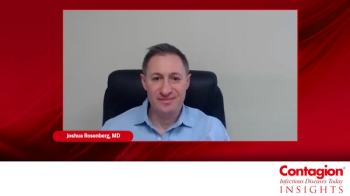
Where is Antimicrobial Stewardship Lacking?
Jason C. Gallagher, PharmD, FCCP, FIDSA, BCPS, President, Society of Infectious Diseases Pharmacists, shares his thoughts on the “elephant in the room” with regards to antimicrobial stewardship.
Jason C. Gallagher, PharmD, FCCP, FIDSA, BCPS, president, Society of Infectious Diseases Pharmacists, shares his thoughts on the “elephant in the room” with regards to antimicrobial stewardship.
Interview Transcript (slightly modified for readability)
“One of the things I think [the Pennsylvania Superbug case] highlights, in a way, is sort of the ‘elephant in the room’ for antimicrobial stewardship. Our biggest area of need is in the outpatient setting. We have gotten pretty good [at] learning how to create programs and implement programs for antimicrobial stewardship on the institutional side, and that’s slowly starting to spread towards long-term care facilities, which is very important because they are a reservoir for many different types of resistant bacteria. But in the outpatient setting, we really haven’t figured out how to do that very well.
Part of this is diagnostics. Antibiotics are prescribed usually before you know exactly what you’re dealing with. When someone comes in with a urinary tract infection, you don’t wait for the culture results to come back before you start [treatment], you [just] start them. For some infections, where it’s fairly characteristic what the infection is going to be due to, and that [the patient] actually [has this] infection, that is okay. But for other [infections], like upper respiratory tract infections, where a large percentage of antimicrobial use is not necessary, we need better diagnostics to figure out who has a cold, and who has sinusitis, or a bacterial infection of some sort.
In terms of how we get there, to have better diagnostics in the clinic, the first point is that [new forms of diagnostics] need to be developed, and they’re getting there in some ways. But once they [have been developed], we need to incentivize their use. In terms of reimbursement for clinicians to utilize these [diagnostics tools], we have to get [insurance companies] to do that in some way. [And so], first, [clinicians] need to know of [these tools’] existence. Second, if it takes a little more time to [use the diagnostic tests], they need to be reimbursed for doing that. Increasing the diagnostics certainty is important; [however] we need to help people get there.”
Newsletter
Stay ahead of emerging infectious disease threats with expert insights and breaking research. Subscribe now to get updates delivered straight to your inbox.



